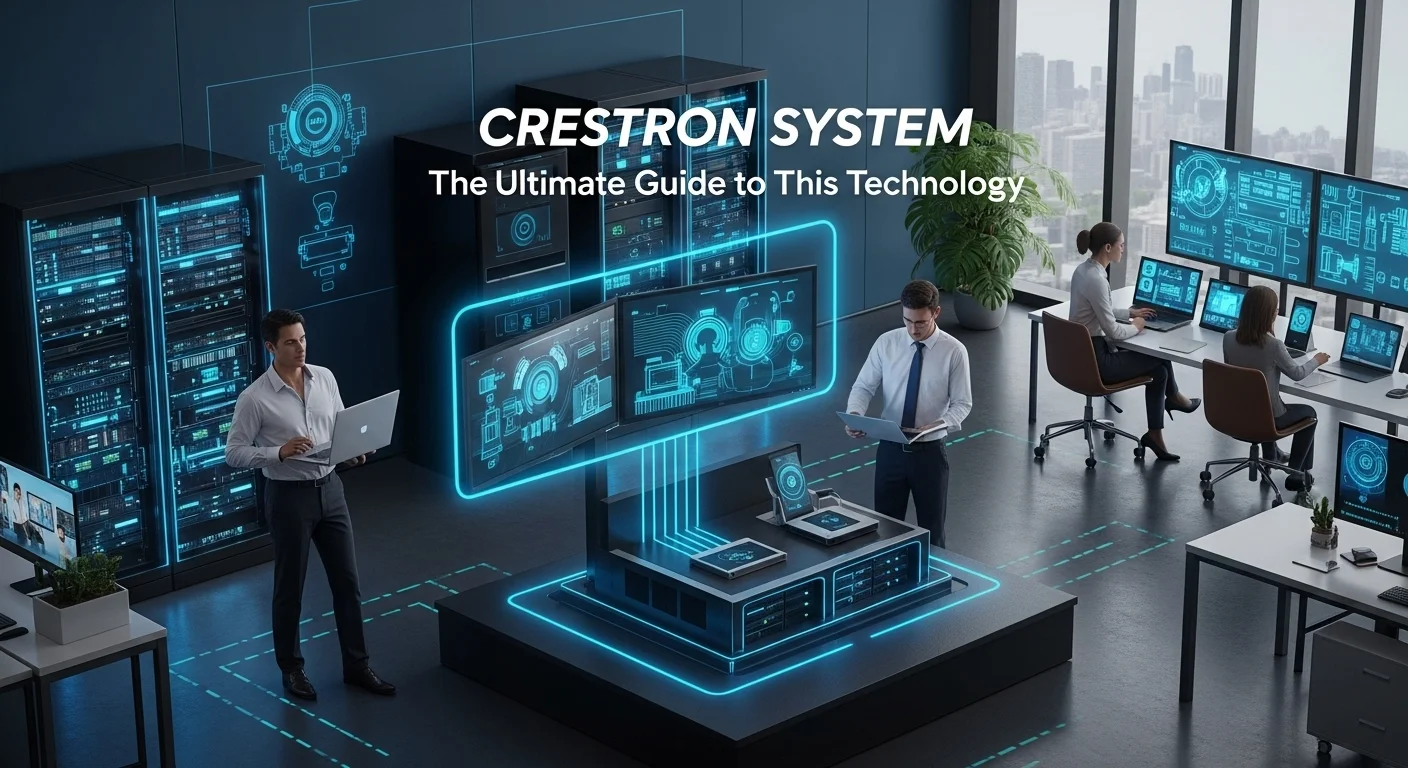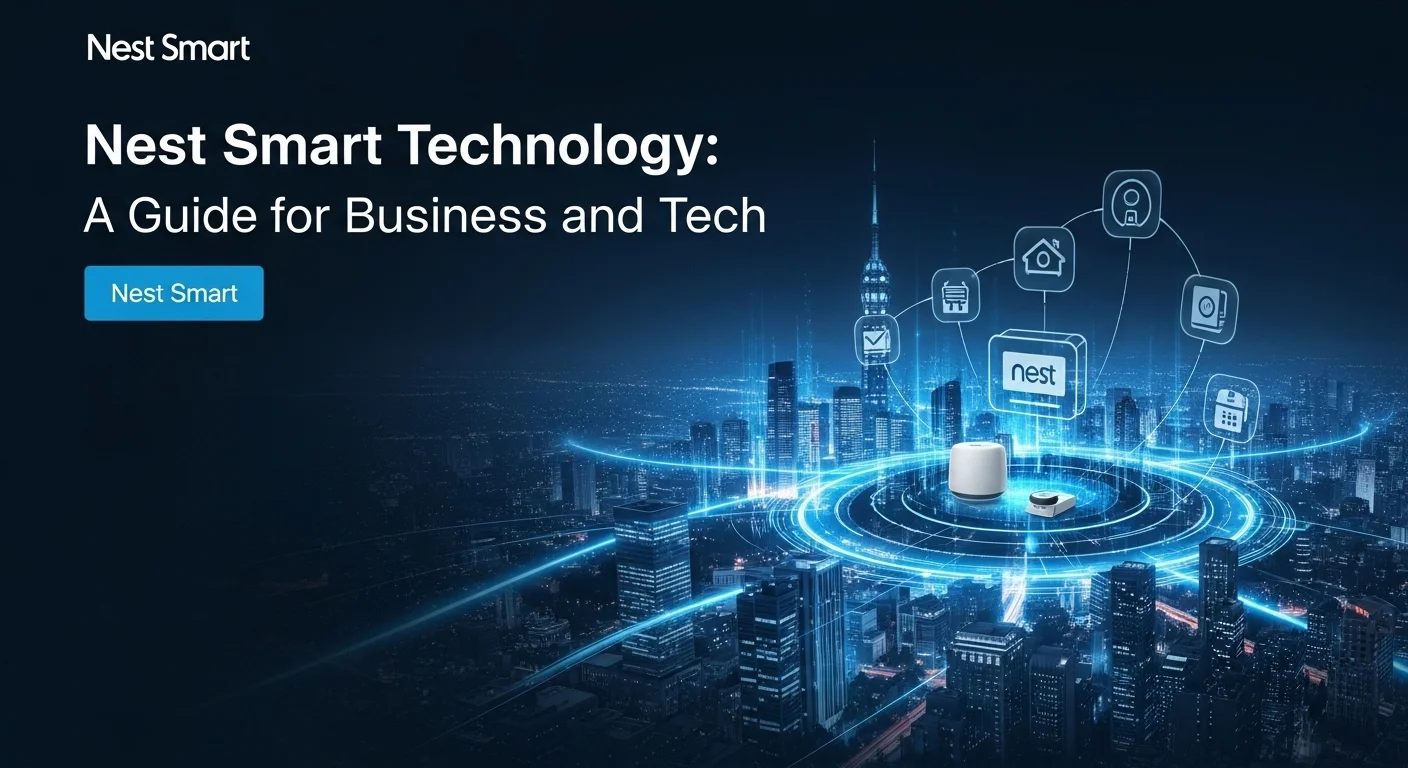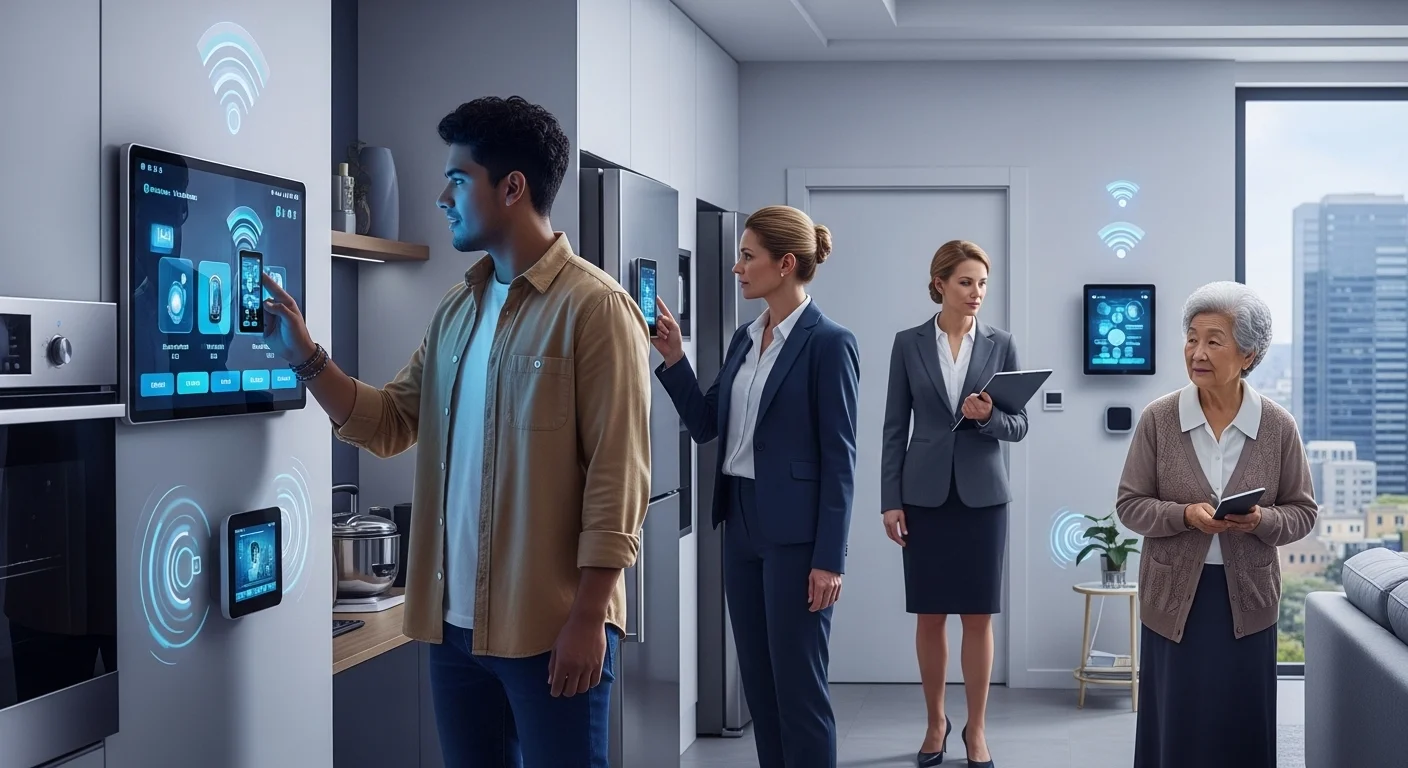What is a Crestron System? My Expert Guide to High-End Smart Automation

Executive Summary
When people talk about 'smart homes,' they're often thinking of a few smart speakers or lightbulbs. But a Crestron System is in a completely different league. I've spent years installing and programming these systems, and the best way to describe it is as the central nervous system for a building. It's a professional-grade technology that doesn't just connect devices; it orchestrates them into a seamless experience for luxury homes and major corporations. Its real power comes from its rock-solid reliability, deep customization, and ability to unify everything—lighting, climate, security, AV—into one simple interface. For a business, this means meetings that start on time without technical glitches. For a homeowner, it’s about a lifestyle of effortless comfort. In this guide, I'll walk you through the core of Crestron automation, from the powerful processors to the user-friendly Crestron Home OS. We'll also tackle the big question—the cost of a Crestron system—and I'll explain why I see it as a long-term investment in efficiency and quality of life, not just an expense.
Table of Contents
What is a Crestron System, Really?
In my world of technology integration, the word 'smart' gets thrown around a lot. But there's a huge difference between consumer gadgets and the professional-grade automation that truly runs a building. At the very top of that professional tier, you'll find Crestron. A Crestron System isn't a single product you buy in a box. It's a complete, integrated ecosystem of hardware and software that gives you centralized control over virtually any electronic system you can imagine. For over 50 years, Crestron has been the invisible backbone in the world's most demanding environments—think Fortune 500 boardrooms, leading universities, government command centers, and incredible luxury homes. The magic of this technology is its ability to take all the separate systems—your lights, thermostats, security cameras, audio/video, motorized shades—and make them talk to each other and work in perfect harmony. This creates an environment that's not just 'smart,' but genuinely intelligent and tailored to the way you live and work.
How a Crestron System Works: The Core Components
So, how does it all come together? Think of a Crestron automation system like a body. It has three main parts: the brain, the hands, and the things it controls. The processor is the brain. It's a powerful, dedicated computer that runs all the custom logic I, as an integrator, program into it. All the rules, schedules, and scenes ('Movie Night,' 'Good Morning,' 'Away Mode') live here. The user interfaces are the hands—how you interact with the system. This could be a beautiful touch screen on the wall, a simple engraved keypad, a handheld remote, or, most often these days, the sophisticated Crestron Home system app on your phone. These interfaces are my canvas; they can be fully customized to look and function exactly how the client needs them to. Finally, you have the controlled devices. This is the vast universe of products the system manages, from Crestron's own hardware to thousands of third-party devices. Crestron's superpower has always been its ability to play nice with almost everyone, making it the ultimate universal translator for technology.
Crestron for Business: More Than a Smart Boardroom
In the corporate world, Crestron is all about boosting productivity and efficiency. I’ve seen it firsthand: a well-designed Crestron room can be a game-changer. Imagine a single button press that dims the lights, lowers a projector screen, turns on the audio, and launches a Microsoft Teams call. It completely eliminates the 5-10 minutes of fumbling with cables and remotes that kill the momentum of a meeting. Crestron's commercial solutions, like the Crestron Flex line, provide this consistent, simple experience in every single meeting space. And for the IT managers, the Crestron XiO Cloud platform is a lifesaver. It lets them deploy, monitor, and manage thousands of Crestron devices across the globe from a single web page. This isn't just convenient; it saves a massive amount of time and money. It's no wonder that over 90% of Fortune 500 companies have Crestron technology somewhere in their buildings.
Crestron for Your Home: The True Smart Home Experience
For homeowners, we talk about the Crestron home automation system. This is where we elevate a house into a truly intuitive smart home. Unlike the DIY approach, which often ends up being a clumsy collection of different apps that don't cooperate, a Crestron smart home system provides one unified, reliable experience. Picture a 'Good Morning' scene: your shades slowly rise, the lights gradually brighten like a natural sunrise, the thermostat adjusts to your ideal temperature, and your favorite news podcast starts playing softly in the kitchen. Or an 'Away' mode that you tap on your way out, which arms the security, turns off all the lights you forgot, and sets the climate to an energy-saving mode. This level of orchestration is about comfort, convenience, and peace of mind. The system is built for extreme reliability and can scale from a small condo to a massive estate without breaking a sweat.
Demystifying the Cost of a Crestron System
Of course, this level of performance comes with a significant price tag. Let's talk about the cost of a Crestron system. It’s crucial to understand that Crestron is a professionally installed solution, not a retail product. The final cost depends entirely on your project: the size of your space, how many things you want to integrate (lights, shades, AV, etc.), the specific hardware you choose, and the complexity of the custom programming required. A basic single-room setup might start in the low five figures, while a fully loaded, bespoke system for a large luxury home can run well into six figures or more. I always tell my clients to think of it like commissioning a custom-tailored suit versus buying one off the rack. The initial investment for a Crestron system is higher, but you're paying for a solution that is built to last, is incredibly reliable, and is perfectly fitted to your lifestyle or business needs. The value is in the quality and the unparalleled user experience, which is why it remains the top choice for those who want the absolute best.

A Deeper Look at Crestron: The Tech, Business Strategy, and a Smarter Home
When we peel back the layers of a Crestron System, we find a powerful architecture designed for near-infinite flexibility. This is what allows it to serve both complex business needs and the most luxurious Crestron smart home systems. The whole system is anchored by a central processor. These aren't your average computers; they are robust, network-grade appliances, from the nimble MC4-R that powers many Crestron Home system installs to the beastly 4-Series processors like the CP4-R for large-scale projects. The programming that makes these processors sing is where a lot of the magic happens. For years, we integrators used a graphical language called SIMPL. Think of it like a visual flowchart for logic. For more complex needs, we could use a language called SIMPL+. More recently, Crestron has embraced C#, a standard and powerful programming language. This evolution is fantastic because it allows us to either rapidly build common functions or dive deep and write highly custom code for truly unique challenges—the sky is the limit.
The Business Case: Standardization and Efficiency
For businesses, deploying Crestron is a strategic investment in efficiency. The Crestron Flex platform for meeting rooms is a perfect example. It's a suite of tools designed to work natively with Microsoft Teams or Zoom. The result? Any employee can walk into any room and join a meeting with a single touch. No confusion, no calls to the IT helpdesk. I've seen companies roll out hundreds of these rooms, and the key to their success is standardization. A small huddle room and a large boardroom have the same simple interface, which drastically reduces training time. Behind the scenes, the Crestron XiO Cloud service is the powerhouse. It's an IoT platform that lets an IT team see the health of every device on the network, push updates, and get alerts before a user even knows there's a problem. They can also see data on how rooms are being used, which helps them make smarter decisions about their real estate and technology. When a company evaluates the total cost of a Crestron system, this long-term management efficiency and data insight provide a huge return on investment.
The Residential Revolution: Crestron Home OS
On the residential side, the game has been completely changed by the Crestron Home OS. In the past, every Crestron system required extensive custom programming, which meant a longer installation time and higher cost. Crestron Home delivers an incredibly polished, powerful, and user-friendly experience right out of the box. As an integrator, I can now set up a sophisticated system much more quickly, which has a direct impact on the overall project cost. The interface on touch screens and mobile devices is fluid, responsive, and beautiful. It seamlessly controls everything: multi-room audio and 4K video (using amazing tech like DM NVX for pixel-perfect video over a standard network), lighting scenes, climate, security, and more. What's great is that it also empowers the homeowner. You can easily create or tweak your own scenes—like a 'Dinner Party' scene that sets the lights just right and plays a specific playlist—without having to call me. This level of personalization, combined with advanced features like circadian rhythm lighting that supports your natural sleep cycle, is what makes a house feel like a truly modern home.
How Crestron Stacks Up: A Quick Comparison
When people look at high-end automation, they often ask me about Control4 and Savant. Here’s my honest take based on years in the field. Control4 is a fantastic, robust system that's generally more accessible in terms of price. It has a great ecosystem and is perfect for many projects, but it typically offers less deep customization than Crestron. Savant is renowned for its sleek, Apple-centric user interface and appeals to clients who put a premium on a specific design aesthetic. Crestron has always been the king of power and flexibility. If you have a massive, complex project or unique requirements that no off-the-shelf solution can handle, Crestron is the answer. The ability to write custom drivers and code means we can make it integrate with virtually anything. With the introduction of the Crestron Home platform, it's now also a top contender in the more standardized smart home space, offering a faster-to-deploy solution built on its legendary hardware. The choice often comes down to the project's scope, the client's desire for customization, and the budget, where the investment in a Crestron system reflects the ultimate level of control and personalization available.

My Top Tips for Maximizing Your Crestron System Experience
Getting the most out of a Crestron System, whether at the office or at home, comes down to smart planning and working with the right people. After countless installations, I've learned a few things that ensure a project is a smashing success. Here are my key strategies and best practices.
1. Your Integrator is Your Most Important Choice
I can't stress this enough: the success of your Crestron automation system depends almost entirely on the skill of your integrator. This isn't a product, it's a custom-built solution. When you're choosing a firm, look beyond the glossy brochure. Ask to see a portfolio of projects similar in scale to yours. A huge red flag for me is when a company outsources their programming; keeping that talent in-house is critical for a smooth process. Ask for client references and actually call them. A good integrator with certified, experienced programmers is your partner in building a reliable system that you'll love for years.
2. Design for Experiences, Not Just Devices
During the design phase for a Crestron smart home system, I always encourage clients to think about how they live, not just what they want to control. Don't just say, 'I want to control the kitchen lights.' Instead, think, 'I want a 'Cooking' scene that sets the island lights to 100%, under-cabinet lights to 70%, and plays my favorite cooking playlist.' This experiential approach helps me program a system that feels intuitive and genuinely helpful. Take advantage of automated schedules, too. For example, we can have your landscape lights turn on 15 minutes after sunset automatically, or have the shades on the west side of your house lower in the hot afternoon sun to save energy. These little automations make a huge difference.
3. For Businesses: Standardize, Scale, and Secure
In a corporate setting, the strategy is about creating a predictable, scalable, and secure environment. My most successful enterprise clients develop a standard template for each room type (huddle room, conference room, etc.). This makes deployment fast and ensures any employee can use any room without needing a manual. You should also lean heavily on the Crestron XiO Cloud platform for its data. I've seen IT departments use room usage data to justify building more huddle spaces or to proactively service a projector that's showing early signs of failure. Finally, security is non-negotiable. We always follow Crestron's Secure Deployment Guidelines, which includes isolating the control system network and using enterprise-grade authentication. Your control system should be a fortress.
4. Managing the Investment: Phased Approach and Future-Proofing
Let's be realistic about the cost of a Crestron system. It's a significant investment. A smart way to manage this is with a phased approach. You don't have to automate the entire building on day one. Start with the most important areas—maybe the family room and home theater, or the main boardrooms. The key is to design the initial 'backbone'—the processor and network infrastructure—to handle future expansion. I call this 'building the superhighway first,' even if you only have a few cars on it to start. Don't skimp on your network switches and wiring; they are the foundation for everything, especially with modern video-over-IP systems. A well-designed system is an investment that grows with you. By planning ahead and having a long-term relationship with your integrator, you ensure your system stays current and continues to deliver value for years to come.
Expert Reviews & Testimonials
Sarah Johnson, Business Owner ⭐⭐⭐⭐⭐
As a business owner, the breakdown of Crestron Flex and the XiO Cloud was incredibly helpful. The advice on standardizing room types is something we'll definitely implement. A great read.
Mike Chen, IT Consultant ⭐⭐⭐⭐⭐
I'm an IT guy, and I've worked with Crestron before. The way you explained the programming (SIMPL vs. C#) and the importance of a solid network backbone was spot-on and easy for my non-tech colleagues to understand. Thanks!
Emma Davis, Homeowner ⭐⭐⭐⭐⭐
We were considering a smart home system and felt overwhelmed. Your article was a lifesaver! The explanation of Crestron Home OS and the 'experience-based' design tips gave us so much clarity. The comparison with Savant and Control4 was also super honest and useful.



